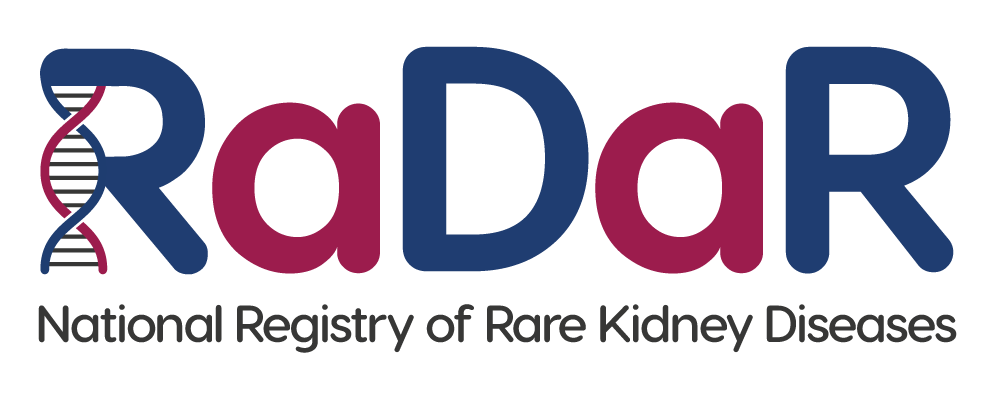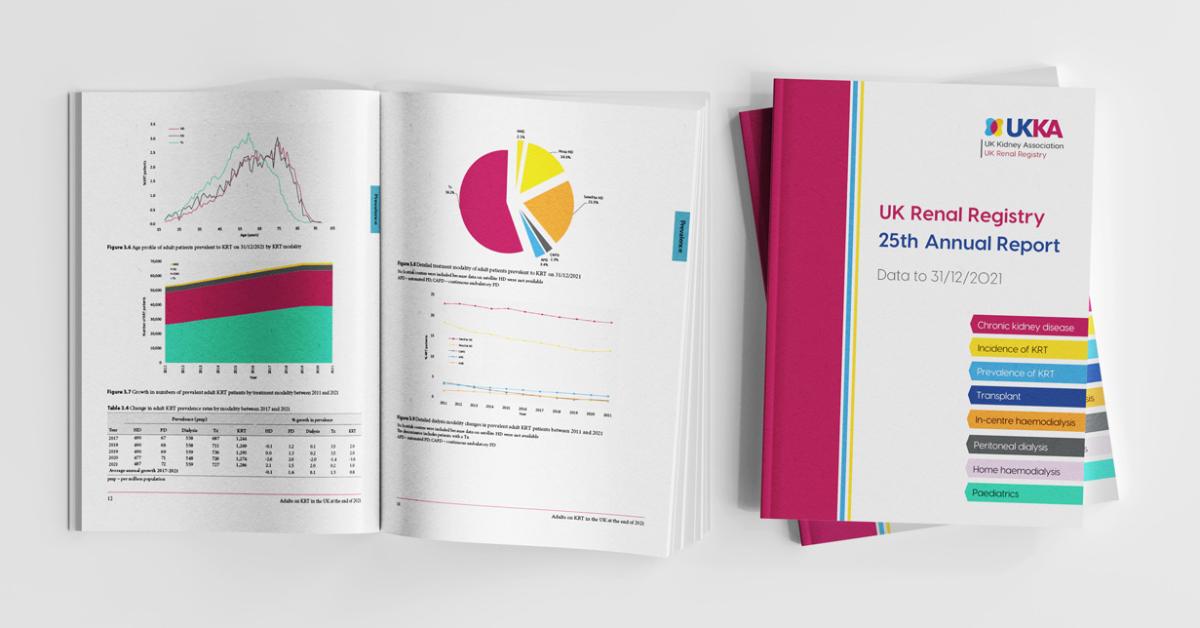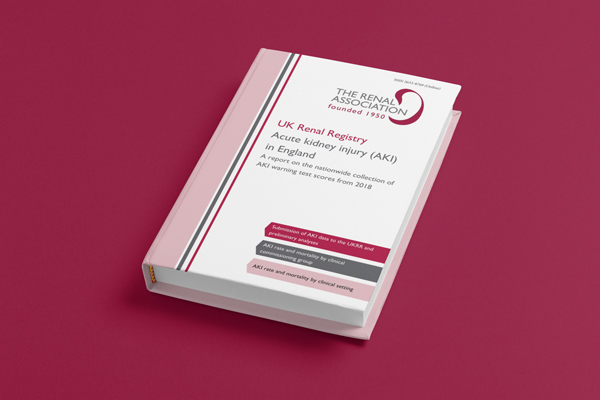Patient Information
Membranoproliferative glomerulonephritis (MPGN), Dense Deposit Disease (DDD) and C3 Glomerulopathy (C3G) are similar conditions that affect the kidneys. The names for these conditions comes from the different appearances of the kidney reported by pathologists. Recently there has been greater focus on how these illnesses work, rather than just what they look like.
The symptoms that a patient can experience are similar across this group of conditions. Where a specific symptom is related to a particular diagnosis it is explained below.
Blood and protein in the urine
This is often one of the earliest signs of these conditions. Patients usually have no other symptoms at this stage. Sometimes there are small amounts of blood in the urine that go unnoticed by a patient. This is detected on a stick test of the urine, or by looking at the urine under a microscope (microscopic haematuria). If there is a large amount of blood, it often becomes visible. Patients notice that the urine has a smoky, rusty brown appearance rather than the clear golden colour of healthy urine. Sometimes the urine will be obviously red. If a patient develops a cough or a cold their urine often has more blood in it for a few days. In these diseases there is no pain associated with passing blood in the urine. Also the amount of blood in the urine does not relate to the severity of the disease. More is not necessarily worse.
Protein dissolved in the urine is not visible. If there a lot of protein the urine may become frothy, rather like the head on a pint of beer. Healthy urine contains hardly any protein. In these conditions the kidneys leak protein. Sometimes the leak is mild or modest, sometimes massive. A simple urine stick test can tell which. The amount of protein in the urine is an indicator of how aggressive the disease is. If the level of protein in the urine returns to normal it is a sign of improvement. Some patients have massive losses of protein that can cause facial and ankle swelling (Nephrotic Syndrome).
Swollen face and legs
Patients with this group of conditions may experience swelling of the face, especially around the eyes and eye lids. This is worse first thing in the morning and tends to improve as the day goes on. This is not an allergy. The skin is a normal colour and there is no itching or pain. There may be swollen ankles too, and this is more obvious at the end of the day. The symptom is caused by the kidneys retaining water in the body.
Rarely the swelling is because the kidneys have shut down their workload abruptly and are unable to get rid of surplus water. This sudden event may indicate a flare up of the condition, perhaps triggered by an infection. Occasionally this is the first symptom. Swelling is more often due to the nephrotic syndrome. About half of MPGN and DDD patients experience this at some point in the course of their illness.
High blood pressure is common in all these conditions. Untreated or unrecognised it further damages the kidneys.
Mild or moderate anaemia is common in MPGN at any stage.
People with MPGN may also experience hives (urticaria). These are itchy red lumpy patches under the skin that come and go over several hours or a few days .
Some patients with DDD lose fat in the face and upper part of the body (partial lipodystrophy). This changes their appearance slowly over several years. Often it is only noticed when their facial appearance is compared to old photographs. The skin itself is normal.
Outcome
These conditions tend to progress slowly and decline in kidney function occurs late. A few people seem to have a spontaneous remission. Sudden deterioration of kidney function can happen, perhaps triggered by an infection, but is rare and often reversible. In most patients with MPGN and DDD the disease remains active. About half of them will progress to end-stage kidney failure over 10 years. The time over which C3G progresses is variable.
Patients do not get symptoms from low kidney function until it reaches Chronic Kidney Disease (CKD) stage 4. At this point they may develop anaemia and there is a risk of developing weakness in bones. These are both treatable and preventable (see below). If the kidney function continues to fall, tiredness, poor appetite, nausea, sickness and weight loss are possible symptoms. At this point (CKD stage 4-5) plans for dialysis and or transplantation are needed.
It is important to get the diagnosis as accurate as possible. This requires a kidney biopsy and interpretation of the findings by an expert pathologist. The biopsy not only indicates the kind of disease (the diagnosis) but also shows how much damage has happened. This is important for predicting the future. Some patients get MPGN as a complication of a separate disease, for example a chronic infection like hepatitis. Doctors look for these diseases and treat them if they are found.
Patients are likely to be offered treatment with a class of blood pressure lowering drugs known as Angiotensin Converting Enzyme (ACE) inhibitor or Angiotensin Receptor Blocker (ARB). These not only reduce blood pressure, which may be needed anyway if the blood pressure is high, but also cut down the loss of protein in the urine. This improves the balance of protein in the body. This class of drugs appears to slow the progression of disease. This is a general observation for similar kinds of kidney disease and has not been tested in the specific context of MPGN, DDD and C3G. Side effects of these treatments are usually mild. ACE-inhibitors cause an irritating cough in some people. An acceptable brand and dosage can usually be found.
If there are problems with swelling patients are advised to reduce the salt content of their diet. This is important as retention of salt causes water to build up in the body. Patients may need a diuretic medicine to help control swelling. These work by making the kidneys excrete more salt and water into the urine. Diuretics and ACE-inhibitors or angiotensin receptor blockers work well together as they amplify each other’s beneficial effects.
Renal units use specialist dieticians to provide dietary advice. Advice changes according to different stages of the disease. When kidney function declines it is often necessary to take vitamin D supplements and restrict dietary phosphorus and potassium.
MPGN/DDD and C3G are disorders of the immune system. This is what the body uses to fight off infection. Patients are therefore usually offered immunosuppressant treatments such as steroids that dampen down inflammation. However, there is little evidence to indicate which of these treatments work best with the least side effects. Clinicians currently tailor their advice to the individual taking the stage of the disease into consideration. Patients who reach end stage renal failure need dialysis and/ or kidney transplant to restore kidney function. In some of the conditions, notably DDD, there is a risk of the disease recurring in the transplant. This does not mean that the transplant will necessarily fail. Sometimes the recurrence is so mild that it does not affect wellbeing. However sometimes transplanted kidneys are lost because of it.
Pending
The MPGN/DDD Support Group are a UK charity dedicated to providing information, understanding and support to patients and their families coping with these rare kidney diseases – MPGN Type 1, DDD and C3G. The first UK patient and family day for people affected by MPGN, DDD, C3G and other related disorders was held in Newcastle on 22nd June 2013.
Each kidney is made up of up to one million nephrons, the basic unit of the kidney. Each nephron consists of a filter (glomerulus) connected to a tube (tubules). Blood passes through the filter which allows fluid to leave the blood stream and flow into the tubule for processing. The filter does not allow blood cells and proteins to cross. Most of the tubular fluid is recovered and only a small amount leaves the body as urine. Urine contains waste products that have been cleared from the blood stream.
In MPGN DDD and C3G there is damage to the kidney filters. This is why protein and blood cells cross over into the urine. The damage is caused by the immune system, in particular antibodies and/or complement.
Antibodies (immunoglobulins) are dissolved in body fluids such as the blood stream. They are able to recognise specific chemical structures on germs and bind onto them. This way germs are targeted for destruction and removal. Complement is another defence system. It is a sequence of substances, also dissolved in body fluids, that react with each other in a precise order when triggered by germs. At the end of the reaction, complement damages germs directly and calls in white blood cells to help get rid of them. The two systems, antibodies and complement, work in harmony. Antibodies that have reached their target activate complement in precisely the same place.
In MPGN antibodies and complement are both embedded in the glomeruli. This is not normal. It is not known why these deposits occur, but it is generally understood that they cause local damage.
Sometimes complement is seen deposited in the kidney without antibodies. This typically involves complement C3, hence the title C3 glomerulopathy. There is evidence that in some people there is a problem with the regulation of complement itself. In a few cases this can be traced back to abnormalities in the genes responsible for certain proteins of the complement pathway.
DDD gets its name from a particular appearance in the kidney biopsy. The dense deposits contain complement but not antibodies. They also contain some as yet unknown materials. DDD was previously called MPGN type 2 but is now regarded as a type of C3G.
Over time, the filters become irreparably damaged by the above processes and nephrons are lost. Unfortunately they cannot be regenerated which is why kidney function eventually declines.
ince MPGN, DDD and C3GN are rare diseases, doctors, nurses, scientists and expert patients from across the country have teamed up to share their knowledge about them. This is the MPGN/DDD/C3G Rare Disease Group (RDG).
Part of the RDG’s work is to collect information about patients. This will improve the understanding of what causes these diseases and help develop effective treatments. Any UK patient with MPGN, DDD or C3G is eligible to take part in the National Registry of Rare Kidney Diseases, RaDaR.
As well as the registry there is also a National Study of MPGN/DDD/C3G linked to the National Institute of Health Research BioResource. This is a government initiative to look at the genes of patients with rare diseases in order to understand more about them. All UK paediatric patients with MPGN, DDD or C3G are eligible to participate in the National Study of MPGN/C3G. Participation will soon extend to more adult renal units.
If you are interested in finding out more about the registry, the National Study of MPGN/DDD/C3G or the activity of the RDG please visit the MPGN RDG page.




